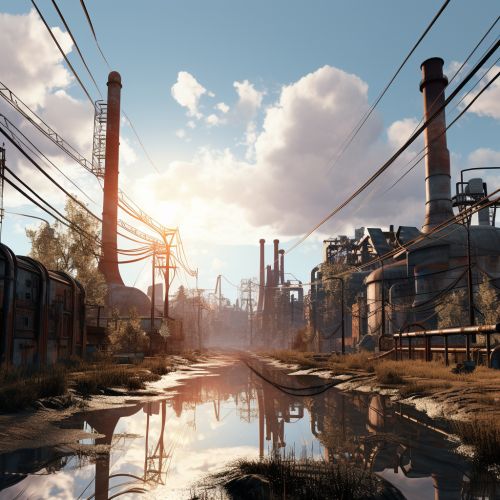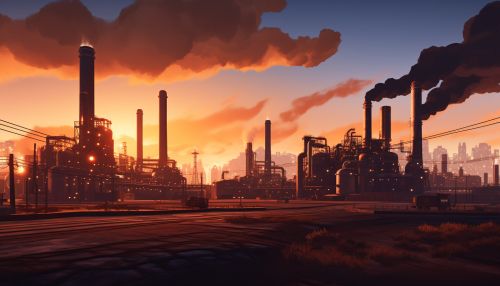Subsurface flow
Introduction
Subsurface flow, also known as groundwater flow, is the movement of water beneath the Earth's surface. This process is a crucial part of the water cycle, contributing to the replenishment of water sources and the maintenance of ecosystems.


Understanding Subsurface Flow
Subsurface flow occurs in the vadose zone and the phreatic zone, which are the unsaturated and saturated zones of the subsurface respectively. The vadose zone, also known as the unsaturated zone, is the area between the land surface and the water table where the pores in the soil or rock are partially filled with air and water. The phreatic zone, on the other hand, is the area below the water table where the pores and fractures in the soil or rock are completely filled with water.
The movement of water in the subsurface is governed by Darcy's law, which states that the flow rate of a fluid through a porous medium is proportional to the pressure difference and inversely proportional to the resistance offered by the medium. This law forms the basis for the study of subsurface hydrology and is widely used in the design and analysis of groundwater systems.


Factors Influencing Subsurface Flow
Several factors influence the rate and direction of subsurface flow. These include the hydraulic conductivity of the soil or rock, the hydraulic gradient, and the porosity and permeability of the subsurface material.
Hydraulic conductivity is a measure of a material's ability to transmit water and is determined by the size and shape of the pores in the material and their degree of interconnection. The hydraulic gradient, which is the slope of the water table, drives the flow of water in the subsurface. The steeper the gradient, the faster the flow.
Porosity and permeability are also key factors. Porosity is the proportion of void space in a material, while permeability is a measure of how easily a fluid can move through a porous material. High porosity and permeability facilitate faster subsurface flow.

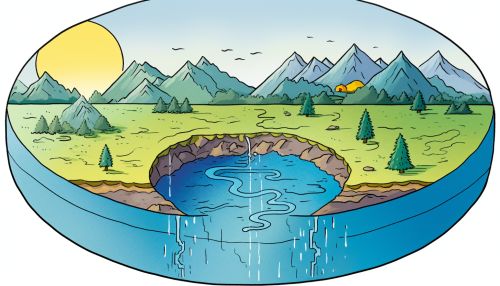
Role in the Water Cycle and Ecosystems
Subsurface flow plays a vital role in the water cycle and ecosystems. It replenishes surface water bodies such as rivers, lakes, and wetlands, and provides a source of water for plants and animals. It also helps to maintain the water table and regulate the flow of water in rivers and streams.
In the water cycle, subsurface flow is a key component of groundwater recharge, which is the process by which water moves from the land surface into the groundwater system. This process helps to maintain the water balance in a region and provides a source of water for human use and for maintaining ecosystems.
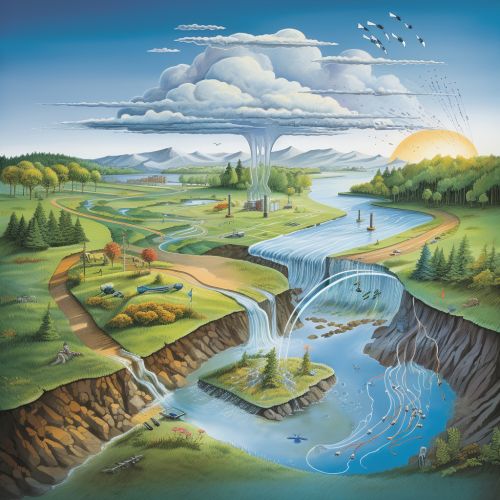
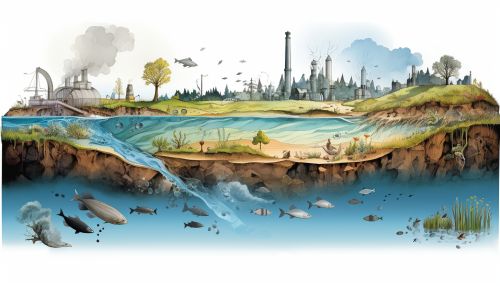
Impacts of Human Activities
Human activities can significantly impact subsurface flow. For example, land development can alter the natural flow paths of water in the subsurface, leading to changes in the water table and potentially causing flooding or water scarcity. Similarly, the extraction of groundwater for irrigation, industrial use, or drinking water can deplete the water table and disrupt the natural flow of water in the subsurface.
Pollution is another major concern. Contaminants can infiltrate the subsurface and pollute the groundwater, posing a threat to human health and ecosystems. Therefore, understanding and managing subsurface flow is crucial for sustainable water management and environmental protection.
